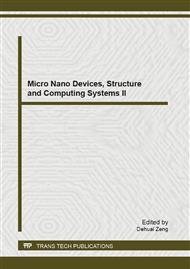p.480
p.485
p.490
p.496
p.502
p.511
p.517
p.523
p.528
Non-Negative Based Locally Sparse Representation for Classification
Abstract:
In this paper, a new method is proposed, which can be considered as the combination of sparse representation based classification (SRC) and KNN classifier. In detail, with the assumption of locally linear embedding coming into existence, the proposed method achieves the classification goal via non-negative locally sparse representation, combining the reconstruction property and the sparsity of SRC and the discrimination power included in KNN. Compared to SRC, the proposed method has obvious discrimination and is more acceptable for the real image data without those preconditions difficult to satisfy. Moreover, it is more suitable for the classification of low dimensional data dimensionally reduced by dimensionality reduction methods, especially those methods obtaining the low dimensional and neighborhood preserving embeddings of high dimensional data. The experiments on MNIST is also presented, which supports the above arguments.
Info:
Periodical:
Pages:
502-507
Citation:
Online since:
March 2013
Authors:
Keywords:
Price:
Сopyright:
© 2013 Trans Tech Publications Ltd. All Rights Reserved
Share:
Citation:


